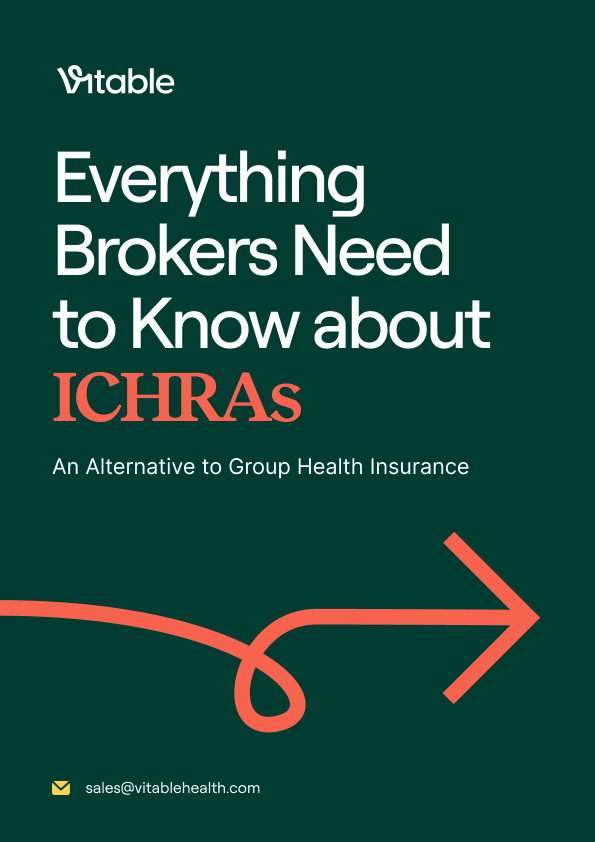Applicable Large Employer FAQs: Everything Employers Are Asking

Whether you’re determining if your business qualifies as an Applicable Large Employer (ALE) or simply trying to stay up to date with evolving Affordable Care Act (ACA) requirements, this article addresses the most common questions employers are asking about the ACA’s ALE designation.
Determining Applicable Large Employer Status
1. What is an Applicable Large Employer (ALE)?
An Applicable Large Employer (ALE) is a federal classification created under the Affordable Care Act (ACA). ALEs are businesses with an average of 50 or more full-time employees, including full-time equivalents (FTEs), subject to the ACA’s Employer Mandate.
2. How do I know if my business qualifies as an ALE?
To determine if your business qualifies as an ALE, you must add the total number of full-time employees and full-time equivalent (FTE) employees for the previous calendar year. If this average is 50 or more, your business qualifies as an ALE and must comply with ACA requirements.
3. Which employees count toward ALE status?
The ACA and IRS set specific guidelines to determine which employees are considered when assessing ALE status. Here are how the different employee classifications impact your ALE determination:
- Full-time employees: Those working an average of 30 hours or more per week or 130 hours or more per month are considered fully employed and count toward ALE status.
- Part-time employees: Those working fewer than 30 hours per week or less than 130 hours per month are counted as full-time equivalents (FTEs) toward ALE status.
- Seasonal employees: Typically count as full-time or part-time employees based on the number of hours that they work.
- 1099 contractors: Independent contractors are not considered employees and are not counted in ALE calculation.
- Non-U.S.-based employees: Generally excluded unless subject to U.S. income tax withholding.
4. How do I determine full-time equivalents (FTEs)?
Part-time employees are counted towards your ALE status as full-time equivalents (FTEs). FTEs are determined by combining monthly hours of part-time employees (capped at 120 per employee), then divided by 120.
Example:
Five part-time employees each work 100 hours in a month.
(5 employees × 100 hours) ÷ 120 = 4.17 FTEs.
Learn more in our article, What is a Full-Time Equivalent (FTE) Employee?
5. How do I calculate ALE status if my workforce fluctuates month to month?
The IRS looks at your average number of full-time and full-time equivalent employees over the entire calendar year. Here’s how it works:
- Count your monthly full-time employees and FTEs separately
- Combine the total
- Average the totals over the year
If the annual average reaches 50 or more, you’re an ALE.
Seasonal Exemption
If your employee count exceeds 50 for 120 days or fewer due only to seasonal workers, you might not be considered an ALE, provided:
- You exceed 50 employees for no more than 120 days (consecutive or not).
- Seasonal employees were the sole cause of the temporary increase.
This exemption is designed to protect businesses that hire additional help during seasonal peaks, such as holidays, harvest time, or summer.
6. If I own multiple businesses, are they counted together for ALE determination?
Yes. Under IRS Employer Aggregation Rules, related businesses with common ownership or control must combine employees from each business for ALE determination.
If together these businesses have 50 or more full-time (and FTE) employees, each separate business (called an ALE member) must follow ACA rules—even if individually they have fewer than 50 employees.
In short, the shared ALE status applies at the group level, but compliance responsibilities and penalties are handled at the individual company level.
Compliance Requirements for Applicable Large Employers
7. What are the ACA requirements for ALEs?
Two ACA provisions specifically apply to Applicable Large Employers (ALEs):
- Employer Shared Responsibility Provisions
- Employer Information Reporting Provisions
Under the Employer Shared Responsibility Provisions, ALEs must:
- Offer Minimum Essential Coverage (MEC) to at least 95% of full-time employees and their dependents (Section 4980H(a) of the Internal Revenue Code).
- Ensure coverage provides Minimum Value (MV) (Section 36B(c)(2)(C)(ii) of the Internal Revenue Code).
- Ensure coverage is affordable, meaning the employee’s contribution for the lowest-cost self-only plan doesn't exceed 9.02% of their household income (2025 rate).
Under the Employer Information Reporting Provisions, ALEs must:
- File annual ACA reporting (Forms 1094-C and 1095-C) with the IRS.
- Provide employees with Form 1095-C annually.
8. What’s considered “affordable” coverage?
Coverage is considered affordable if the employee's contribution for the lowest-cost self-only plan doesn't exceed 9.02% of their household income (2025 rate).
The affordability percentage is updated annually, so it's important to verify the current rate each year.
9. What is Minimum Essential Coverage and Minimum Value?
- Minimum Essential Coverage (MEC): Basic level of health coverage including preventive care, hospitalization, and emergency services.
- Minimum Value (MV): A plan that covers at least 60% of total allowed medical costs and includes substantial coverage for inpatient and physician services.
10. Are ALEs required to offer coverage to spouses?
No. Coverage for spouses is not required. However, ALEs are required to offer coverage to dependents, defined as biological and adopted children under age 26.
11. What happens if an employee declines offered health insurance?
You won’t face ACA penalties if an employee declines your health insurance, as long as you offered coverage that is:
- Affordable (under 9.02% of their household income in 2025),
- Minimum Value (covers at least 60% of expected healthcare costs), and
- Minimum Essential Coverage (MEC).
Just make sure you document your offer and the employee’s decision to decline—this protects you in case of an audit.

Download 2025 Employer Guide to ICHRA
Vitable’s ICHRA Guide gives employers a clear, step-by-step resource for building smarter, ACA-compliant benefits.
This guide explains how ICHRAs work, who qualifies, and how Vitable simplifies setup, onboarding, reimbursements, and compliance — while giving employees more flexibility, control, and care.

Download Vitable’s 2025 Broker’s Guide to ICHRA
The Broker Guide to ICHRAs is a comprehensive resource that helps brokers understand, sell, and manage Individual Coverage HRAs with confidence.
This guide covers everything from compliance and class design to administration flows, case studies, and how Vitable streamlines quoting, enrollments, and reimbursements for brokers, employers, and employees.
Reporting and Recordkeeping Requirements
12. What forms are ALEs required to file with the IRS?
- Form 1095-C: Sent to each full-time employee to detail coverage offered.
- Form 1094-C: Sent to the IRS to summarize overall ALE compliance.
13. When are ACA forms due to the IRS?
ALEs must meet annual IRS reporting deadlines to stay compliant with the ACA. Here are the key due dates for furnishing forms to employees and submitting them to the IRS:
- 1095-C to employees: Due by early March each year (specifically March 1st–3rd in most years).
- Filing with IRS: Forms 1094-C and 1095-C are typically due by February 28 (paper filing) or March 31 (electronic filing).
14. Which employees receive a Form 1095-C?
Each full-time employee should receive a Form 1095-C, even if they declined the offered coverage. The form shows details about the health coverage you offered, and it's required for employees to accurately complete their tax returns. In some cases, part-time employees may also receive a 1095-C if they were enrolled in coverage under a self-funded plan.
15. Is the deadline to furnish 1095-C forms to employees different from the IRS filing deadline?
Yes. The deadline to furnish Form 1095-C to employees is typically earlier than the deadline to file with the IRS.
For example, in most years:
- 1095-C forms must be provided to employees by March 3 (or the next business day if March 3rd falls on a holiday or weekend).
- IRS filing is due by February 28 (if filing on paper, or March 31 if filing electronically).
Be sure to verify the exact dates each year, as deadlines can shift slightly.
16. What if I make a mistake or file late?
If you make a mistake or file late, the IRS may assess penalties for each incorrect or late form. Corrections should be submitted promptly to minimize fines.
17. Do I need to file if I just became an ALE this year?
ALE status is based on your workforce size during the previous calendar year. If your business averaged 50 or more full-time and full-time equivalent employees last year, then you are considered an ALE this year and must file IRS Forms 1094-C and 1095-C for this calendar year (due next filing season).
However, if you just crossed the 50-employee threshold this year, you won’t be required to file until the following tax season, assuming your average remains at or above 50 for the full year.
18. What are my ACA reporting responsibilities if I offer a self-funded health plan?
Self-funded plans trigger additional ACA reporting obligations. If your business offers a self-funded (self-insured) health plan (including an ICHRA), you must complete Part III of Form 1095-C to report the individuals (employees and dependents) who were actually enrolled in coverage. This is in addition to completing Parts I and II of the form.
If you’re not an ALE but offer self-funded coverage, you may still have reporting requirements under Forms 1094-B and 1095-B.
19. Do state mandates affect my ACA reporting?
Yes. Several states, including California, New Jersey, Massachusetts, Rhode Island, and the District of Columbia, have their own health coverage mandates that may require separate reporting from what is filed with the IRS.
If you have employees who live or work in these states, you may need to submit additional forms directly to the state, even if you’ve already filed your federal Forms 1094-C and 1095-C. Be sure to check each state’s requirements and deadlines, as they may vary.
Non-Compliance Penalties
20. What happens if my business fails to meet ACA compliance requirements?
If your business is an Applicable Large Employer (ALE) and fails to meet ACA coverage requirements, you could face two types of penalties:
Part A Penalty – Section 4980H(a): Failure to Offer Coverage
Part A penalty applies if you do not offer Minimum Essential Coverage (MEC) to at least 95% of your full-time employees and their dependents, and at least one full-time employee receives a premium tax credit on the Health Insurance Marketplace.
- 2025 Penalty Amount: $2,900 per full-time employee
- Excludes the first 30 full-time employees from the calculation
Example:
If you have 100 full-time employees and don’t offer MEC:
- (100 - 30) × $2,900 = $203,000 annual penalty
Part B Penalty – Section 4980H(b): Unaffordable or Inadequate Coverage
If you do offer coverage, but it is not affordable or does not meet minimum value, and at least one full-time employee receives a premium tax credit, you could face the Part B penalty.
- 2025 Penalty Amount: $4,460 per year per affected employee
Example:
If 10 employees receive tax credits due to unaffordable or insufficient coverage:
- 10 × $4,460 = $44,600 annual penalty
- Part B penalties are only assessed for the number of employees who receive a premium tax credit, not your entire workforce.
21. Are there any other penalties ALEs should be aware of?
Yes. In addition to ACA coverage penalties, ALEs may face other consequences for compliance failures, including:
- State-level penalties for failing to meet local reporting mandates in states like CA, NJ, and MA
- Penalties for employee misclassification, such as treating full-time employees as part-time or independent contractors to avoid offering coverage
- Fines for failing to provide the Summary of Benefits and Coverage (SBC) to employees as required
- Non-discrimination violations if your self-insured plan favors highly compensated employees
- COBRA noncompliance, if applicable to your organization
Staying up to date on both federal and state-level requirements is key to avoiding unexpected penalties.
Simplify ACA Compliance with Vitable’s Affordable, High-Value Plans
Understanding your ACA responsibilities is just the beginning—choosing the right benefits partner helps you stay compliant, control costs, and provide coverage your employees actually use.
At Vitable, we make it easy for employers to meet ACA requirements with flexible, affordable plans that check all the boxes:
- ACA-compliant options, including MEC, MV, ICHRA, and QSEHRA plans
- Predictable, low-cost pricing that keeps your budget on track
- Direct Primary Care that covers everyday needs—same/next-day virtual visits, free prescriptions and labs, chronic condition support, and more
- Plans employees value, with real, accessible care that helps them stay healthy and productive
Whether you're an ALE exploring alternatives to traditional group plans or looking to strengthen your current offerings, Vitable simplifies compliance while putting meaningful, everyday healthcare within reach.
Let’s build health benefits that work for you and your team. Fill out the form below or request a quote.
Ready to learn more?
Stay ahead with the latest insights on healthcare, benefits, and compliance—straight to your inbox.
Get a quote
Get a personalized health benefits quote tailored to your company’s unique needs.
Vitable helps employers provide better healthcare to their employees and dependents by improving accessibility, cost, and quality.
